As well as being the home to country music in Australia, Tamworth is also home to the latest installation of Cla-Val’s integrated technology to provide tailored solutions to help clients to manage “calm” networks.
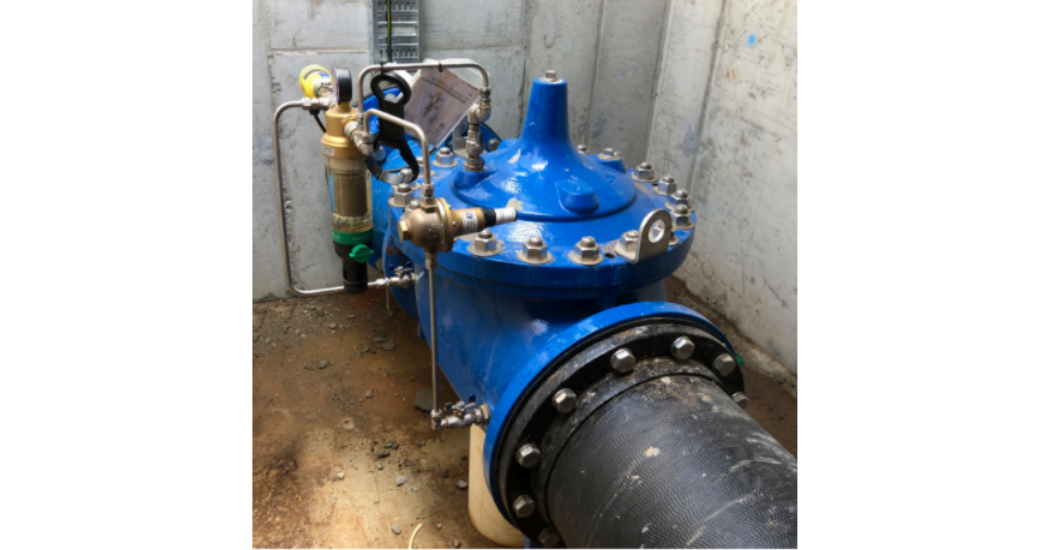
The Dungowan Pipeline delivers raw water under gravity from Dungowan Dam to be treated at the Calala Water Treatment Plant before delivery to Tamworth consumers. It is approximately 55 kilometers long and mostly 500 mm in diameter. Constructed in around 1958 it is made of cast iron and concrete lined in 55 meter sections. Flow down the pipeline is approximately 20 mega litres per day.
High pressure and relatively old age make the pipeline vulnerable to breaks, with on average, around 6 breaks per year being common. The local authority has staff on 24 hour call to respond and repair breaks, however, it can be a long process to find the break, expose the pipeline, perform repairs and then recharge the pipeline.
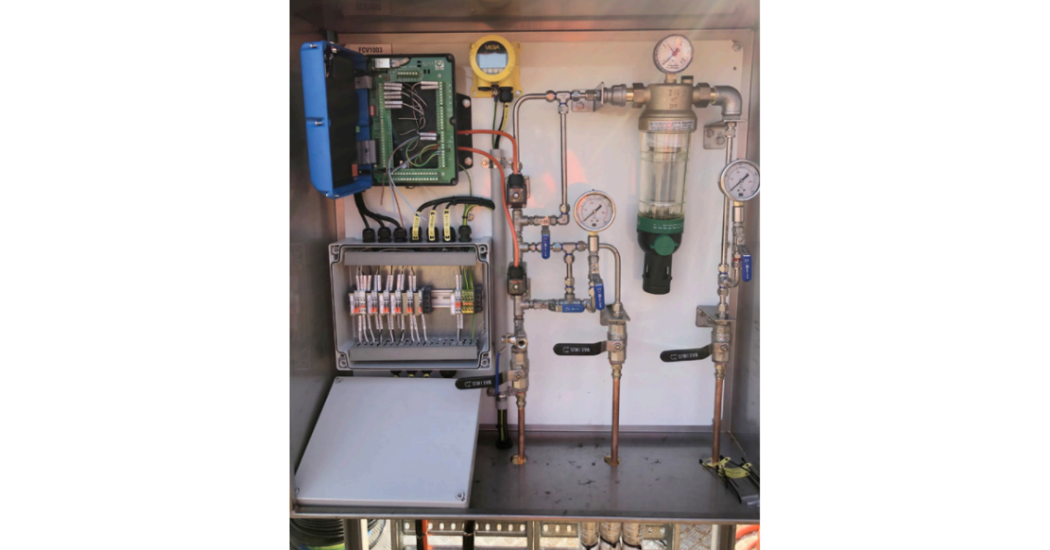
The severe droughts experienced across Australia during 2020 meant that it was a priority to ensure that any breaks resulting in water wastage were minimized. The local authority approached Cla-Val’s partner in Australia, Challenger Valve Controls for an integrated solution to protecting this vulnerable pipeline.
The water utility wanted a 300 mm pressure control valve trimmed for low flow capability to reduce the pressure from 1400 kpa to 250 kpa and then required a 300 mm flow control valve again trimmed for low flow capability, fitted for dual solenoid operation with IP68 4 – 20 mA position transmitter and Cla-Val’s VC-22D valve controller to control flows from 0 – 250 l/s.
Critical to the success of the installation was the custom valve app written specifically for this job that allowed:
- Low remote set points
- Slow and gradual reaction to remote set point inputs
- Valve closure on loss of flow input signal
- Close valve on loss of RSP signal
- Alarm output on loss of power to VC-22D
- Alarm output on loss of VC-22D outputs
- Ability to lock valve shut via digital PLC output signal until the VC-22D receives an “enable” command
It was critical to the success of the operation that the supplier be vertical integrated in supply and maintenance of all equipment and be able to take total responsibility to supply and commission the valve and controller.
Navigation and Specific Features:
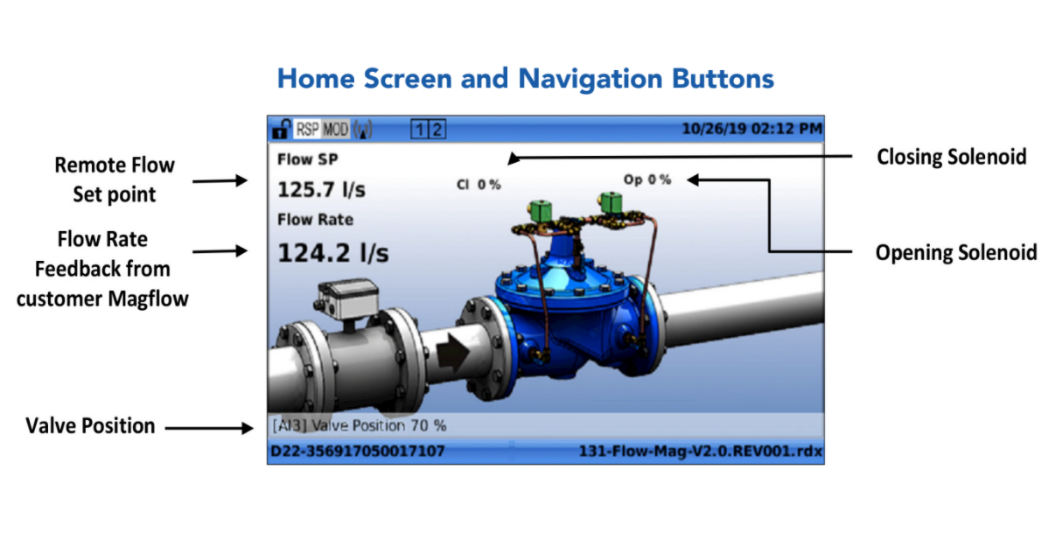
Valve Operation:
The 131 Electronically Controlled Dual Solenoid Operated Flow Control Valve regulates and maintains a constant flow downstream of the valve.
The VC-22D uses a customized ValvApp for the logic controls.
A remote flow set point input is programmed on the VC-22D to receive a 4-20mA analogue signal from the customer’s PLC and provide the control flow set point. The input is ranged from 0-200 l/s.
Upon receiving a 4-20mA command signal from the customer’s SCADA/RTU, the VC-22D electronic valve controller sends an electrical pulse to the opening solenoid, when the flow rate feedback is less than the flow set point, allowing the valve to gradually open, or to the closing solenoid, when the flow rate feedback is higher than the flow set point, allowing the valve to gradually close, until the downstream flow rate is within set point.
Valve position is retransmitted via Analogue Output 1 (AO1), which is hard wired back to the SCADA/RTU, for the customer to monitor the valve’s position.
Upon loss of remote set point signal or flow rate feedback, an action is programmed on the controller to slowly close the valve. On power failure, valve is locked in position, by default.
Active Analogue Inputs:
These are the analogue inputs that are activated for this ValvApp. Inputs AI1 to AI3 are configurable.
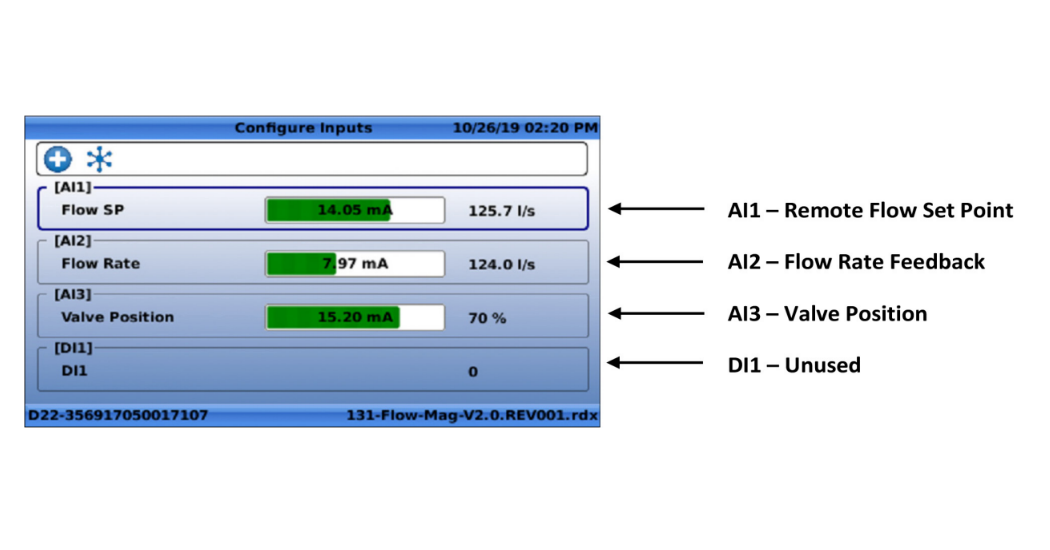
Analogue Inputs Configurations:
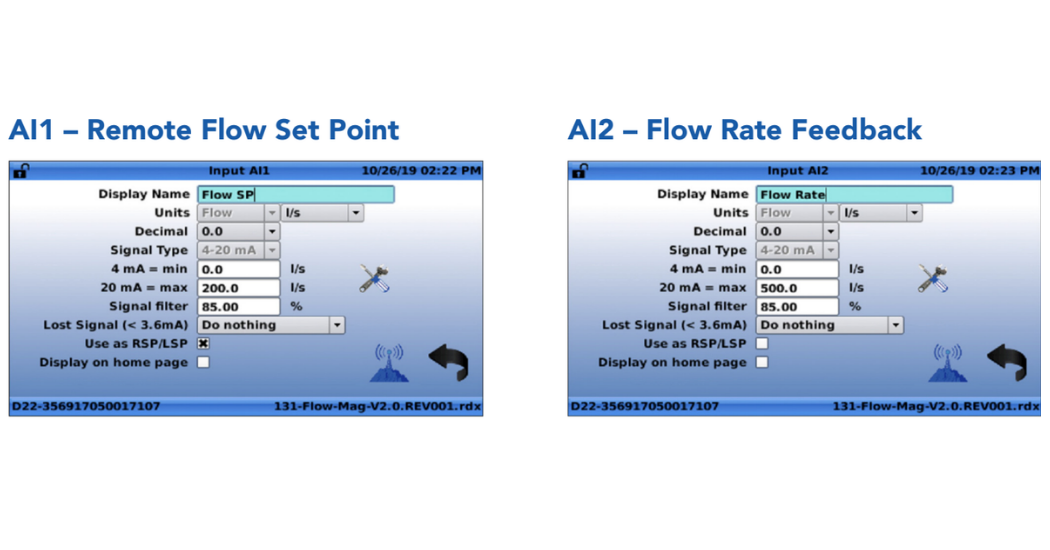
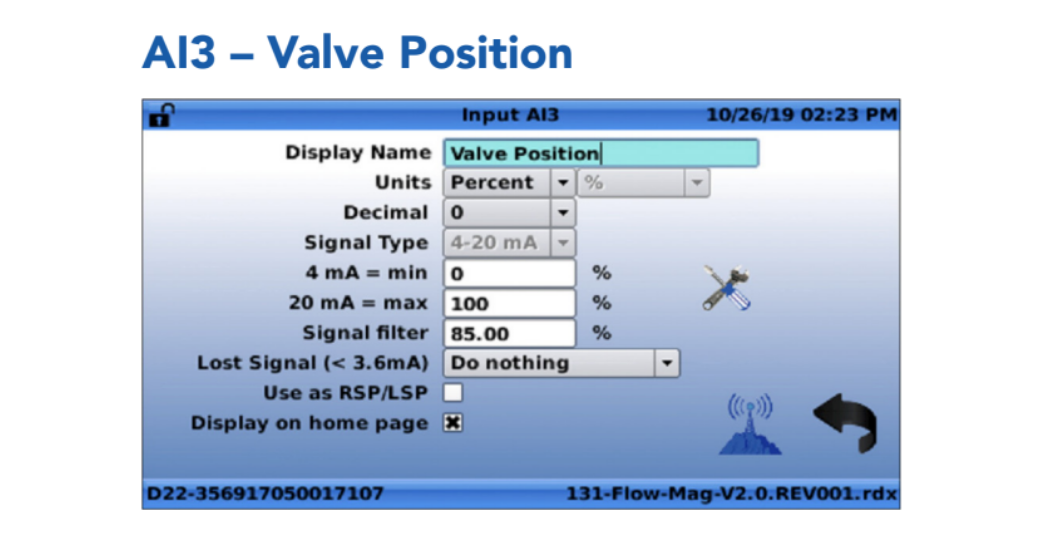
Active Analogue Outputs:
These are the analogue outputs that are activated for this ValvApp. Output AO1 is a retransmitted signal from AI3
and mirrors the same configuration. SO1 and SO2 are the solenoid outputs and are configurable.
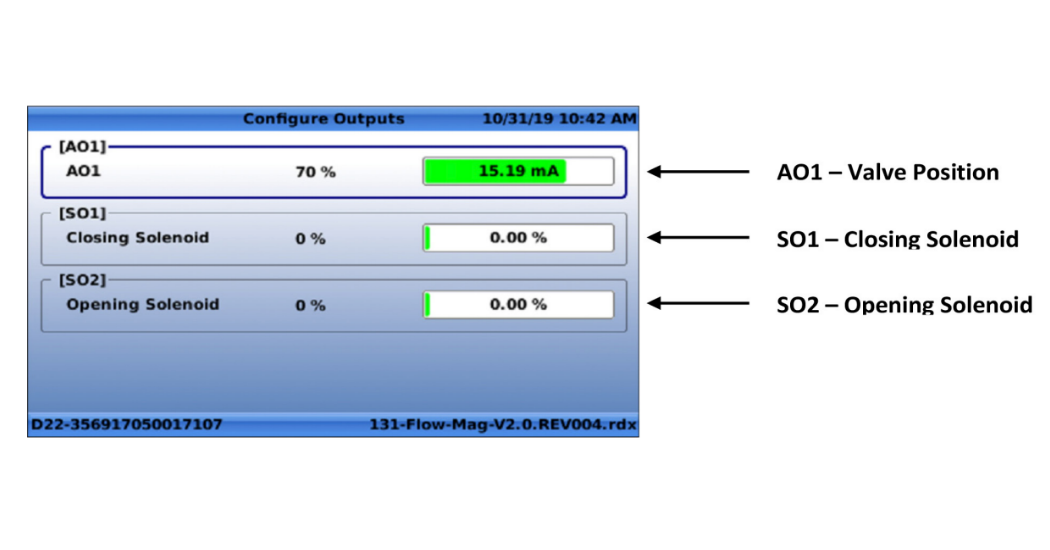
Analogue Inputs Configurations:
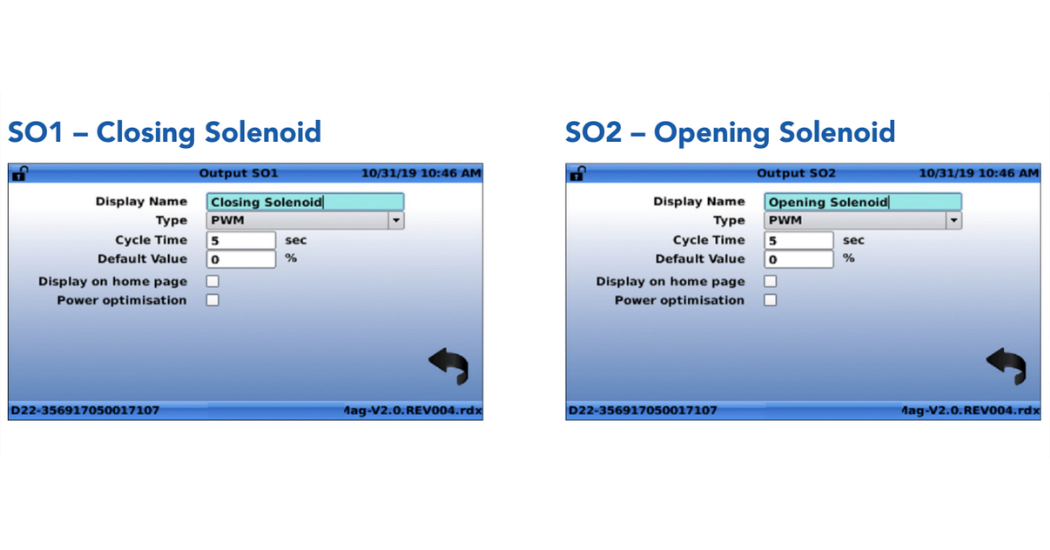
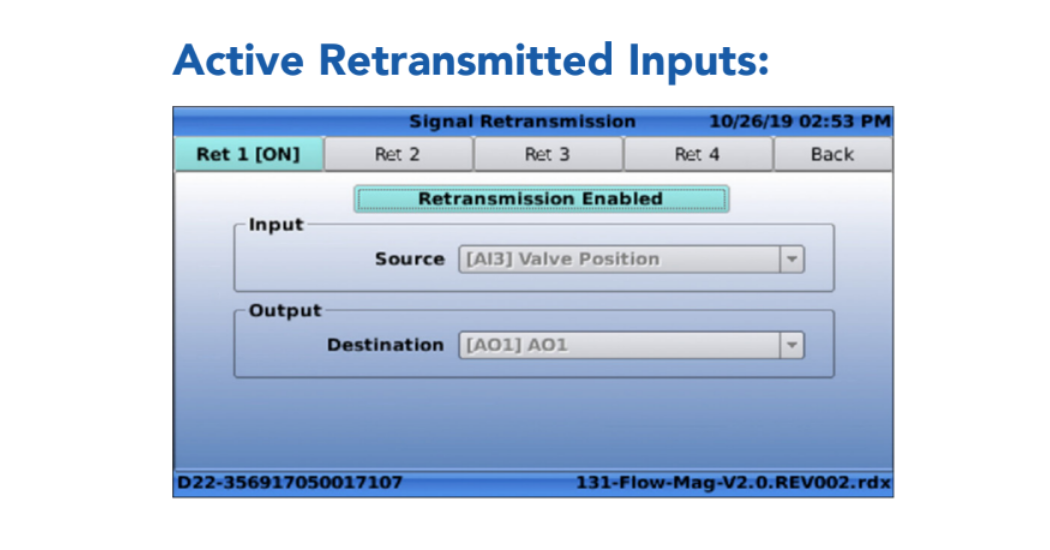
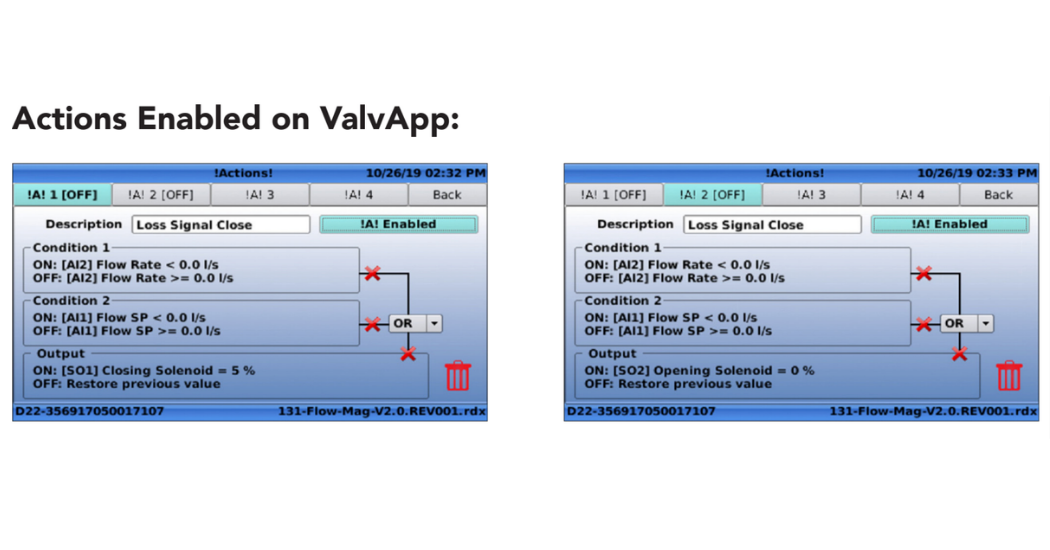
PID (Proportional-Integral-Derivative) Menu Screen
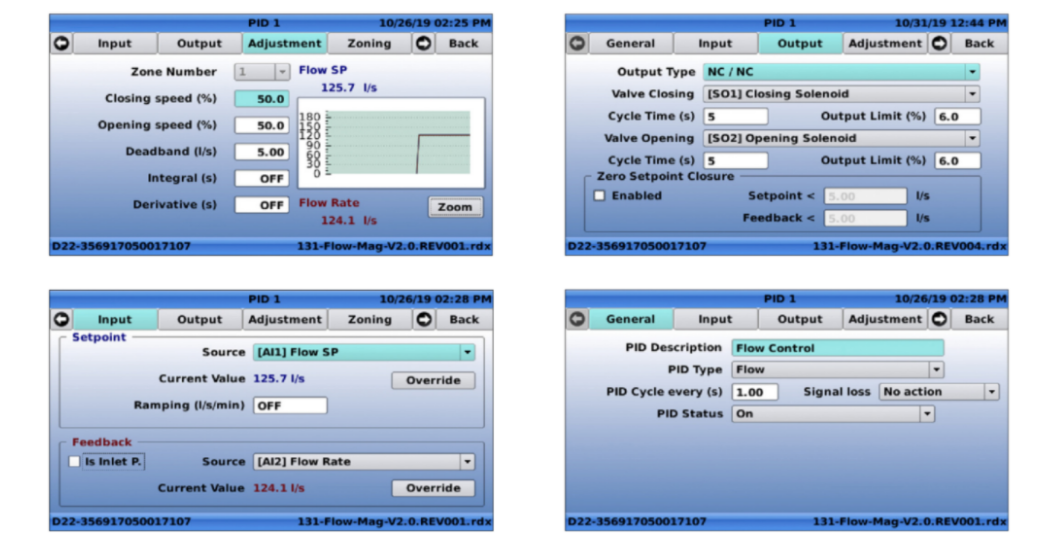
The “PID” regulation controls and regulates the electrical pulses sent to the solenoids. There is one PID regulation programmed on the ValvApp for this application. The PID has its own set points adjusted accordingly to ensure the valve regulates efficiently throughout the flow range.
On configuring the PID, the lower the values, the weaker the electrical pulses sent to the solenoid, the slower the valve operates.
It is not recommended that the PID is adjusted without contacting a Cla-Val technician or technical support person. System operation may be compromised.


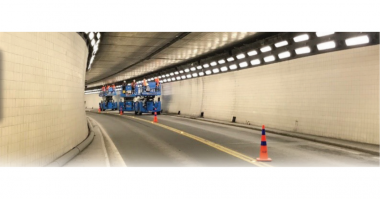


Comments